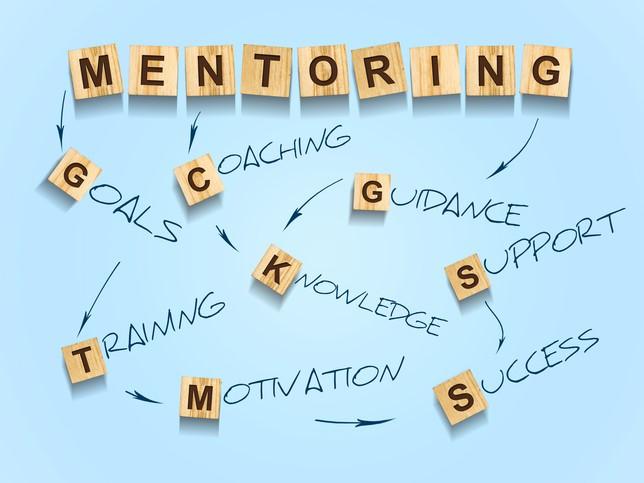
Tips and tricks for impactful reverse mentoring

There are many reasons to implement reverse mentoring, some of which I outlined in a previous article for Campus, “The case for reverse mentoring in higher education”. Here, I share my tips for running your own scheme, stemming from my experiences in higher education and the legal profession.
1. What’s the point? Reverse mentoring with purpose. My most crucial piece of advice is to ensure you have a clear purpose, such as an institutional challenge or problem, that you want to address, using reverse mentoring as a vehicle to spark conversations on this issue. If we have conversations “just because” and there is no clear goal or next steps, this can be demotivating and at worst hurtful, particularly to mentors who put themselves in vulnerable positions to engage in reverse mentoring in the hope of contributing to change.
While many of the benefits in my previous post can be achieved by simply having conversations, it is motivating for mentor and mentee to have a common goal such as to improve personal tutoring. This can help cement the relationship and provide a sense of accomplishment in doing something that will enhance the university experience for others.
- Resource collection: The art of collegiality and why it matters
- Engaging in controversial topics in teaching and research
- Resource collection: Being Black in the academy
2. Make well-being paramount. It is vital to have support in place for mentors and mentees which they are regularly reminded of. Emotive and challenging topics are often explored in reverse mentoring. Support services should be signposted and difficult conversations and safeguarding issues explored in introductory sessions and handbooks. Clear lines of communication and rules on confidentiality are key, as is building trust. Mentors and mentees must feel safe to have discussions and be honest without fear of repercussion, otherwise reverse mentoring loses its critical authenticity. The well-being experience of participants should be a critical part of any project or research methodology.
3. Reflection for action. Mentors and mentees should be encouraged to reflect, perhaps using a diary, before and after the project and in-between conversations. As reflective cycle creator Graham Gibbs put it: “It is not sufficient to have an experience in order to learn. Without reflecting on this experience, it may quickly be forgotten, or its learning potential lost.” If we want reverse mentoring to fulfil its potential and contribute to change, we must embed reflection. And not just individual reflection – there should be opportunities for mentors and mentees to come together as a group to reflect. You might create online chats where participants can communicate as a group. From a research perspective, I have used reflective online logs, closing reflective conversations and group postcard writing. I also meet mentors and mentees informally to chat about their experiences so that not all reflection opportunities are recorded for research purposes.
4. Getting off on the right foot. It’s important to run introductory sessions for reverse mentoring. Making the first session a group activity promotes creation of a community of practice from the outset. Most of my projects have involved several hours of training online or in person which can be more effective than shorter sessions where there isn’t much time for conversation practice and connection building. Give participants time to get to know each other informally before their first meeting. Introductory sessions should involve interactive activities as well as information provision. All crucial information should be included in a project handbook for people to refer back to.
5. What to talk about? This partly depends upon the purpose of your reverse mentoring which will determine conversation themes. In your handbook, provide topics with prompts or suggested questions for each meeting. Some people will be happy to have a one-hour conversation about “belonging”. Others will value having a series of questions or statements to kick-start creative conversations. Either way, there needs to be leeway in topic guidance to facilitate authentic conversations and support individual preferences.
6. Co-design with your community. My work, and enjoyment of it, has been significantly enhanced by co-designing, including with students who identify as under-represented and members of the legal profession. This ensures the design, focus and themes of the scheme speak directly to those who it seeks to support and influence. It results in a scheme informed by pertinent issues, rather than what I think is relevant. This can facilitate greater buy-in from participants and gatekeepers if they see community members have been involved in project design, enhancing authenticity.
7. Think about wider impact. One of the biggest benefits and drawbacks of reverse mentoring is its one-to-one nature. It’s a very personalised experience so relies on participants taking action after the project for lessons learned to have wider impact. Support mentors and mentees to do this through follow-up community activities such as running workshops, speaking at conferences and co-writing pieces. A reverse mentoring action plan might help to close feedback loops with participants and create accountability, establishing what they discussed and what they did or plan to do in response (and what you are going to do to move the project and its impact forward).
8. Who are your participants? Everyone can benefit from reverse mentoring, whether already engaged with diversity and inclusion work or not. There is more significant learning potential for those who feel most distant from student lives. Plus, the more clout or seniority mentees have, the more likely the project can have broader impact and catalyse institutional change. However, reverse mentoring can still contribute to cultural shifts at less senior levels, taking a grassroots approach. I have seen this when engaging personal tutors as mentees. Most of my projects have focused on students who identify as under-represented as mentors. However, some projects have targeted particular identity characteristics such as international students. Again, it comes back to your purpose and who needs to be involved in these conversations?
In terms of finding your participants, authentic and accessible communications are vital in setting the project’s tone and aims. I share why I feel under-represented at university as a working-class, first-generation former student and academic and how this shapes my desire to drive change. This has encouraged staff and students who ordinarily have not recognised themselves as belonging to academic research projects to get involved because they see from the outset the positive intentions behind this work.
Now you’re armed with some practical tips, why not get started with your own scheme? I’d love to hear from you if you decide to take reverse mentoring forward in your institution.
Rachael O’Connor is an associate professor in the School of Law at the University of Leeds.
Read more about Rachael’s work on reverse mentoring:
The case for reverse mentoring in higher education
Exploring academic personal tutoring with under-represented students
If you would like advice and insight from academics and university staff delivered direct to your inbox each week, sign up for the Campus newsletter.


